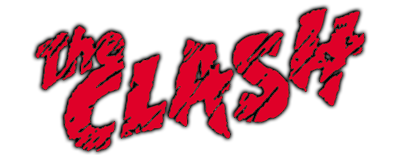Track List
01) The Magnificent Seven
02) Hitsville U.K.
03) Junco Partner
04) Ivan Meets G.I. Joe
05) The Leader
06) Something About England
07) Rebel Waltz
08) Look Here
09) The Crooked Beat
10) Somebody Got Murdered
11) One More Time
12) One More Dub
13) Lightning Strikes (Not Once but Twice)
14) Up in Heaven (Not Only Here)
15) Corner Soul
16) Let's Go Crazy
17) If Music Could Talk
18) The Sound of Sinners
01) The Magnificent Seven
02) Hitsville U.K.
03) Junco Partner
04) Ivan Meets G.I. Joe
05) The Leader
06) Something About England
07) Rebel Waltz
08) Look Here
09) The Crooked Beat
10) Somebody Got Murdered
11) One More Time
12) One More Dub
13) Lightning Strikes (Not Once but Twice)
14) Up in Heaven (Not Only Here)
15) Corner Soul
16) Let's Go Crazy
17) If Music Could Talk
18) The Sound of Sinners
5:30
4:21
4:52
3:05
1:41
3:42
3:25
2:45
5:28
3:33
3:32
3:35
4:50
4:32
2:42
4:24
4:36
4:01
Data Complete 80%
Total Rating
Total Rating
![]() (3 users)
(3 users)
Back Cover![]()
CD Art
3D Case
3D Thumb
3D Flat
3D Face
3D Spine
First Released
![]() 1980
1980
![]() Punk Rock
Punk Rock
![]() Confrontational
Confrontational
![]() Punk
Punk
![]() ---
---
![]() Medium
Medium
![]() Album
Album
![]() 0 copies
0 copies
Album Description
Available in:



Sandinista! est le quatrième album du groupe britannique The Clash, édité par CBS Records et sorti le 12 décembre 1980 au Royaume-Uni. Ce triple album contient trente six titres, six sur chaque face.
Anticipant la tendance de la world music des années 1980, ce disque polyvalent mêle de nombreux styles : rock 'n' roll, rhythm and blues, reggae, jazz, gospel, rap, soul, rockabilly, folk, calypso et dub. L'album est classé 404e meilleur album de tous les temps par Rolling Stone Magazine.
Le titre est une référence au mouvement révolutionnaire sandiniste du Nicaragua.

User Album Review
It might be grammatically incorrect in literal terms to call a triple album a thing of two halves, but that's what The Clash produced in 1980. Essentially, Sandinista! is divided between the Clash made of win and the Clash made of lose, and the latter, unfortunately, easily wins out.
In rock music terms, things had moved on from the birth of punk in 1976. The genre was all but dead in the water, and had been for two years (John Lydon's post Sex Pistols act Public Image Limited had already released three albums, including Metal Box). Highly politicised second-wave UK punks such as Crass and Discharge were lurking, ready to make bands such as The Clash look like bloated, cash-corrupted anachronisms in a much more effective way than Jones, Strummer and co had done for prog four years earlier.
Received wisdom would have you believe that this was the fault of the group's backline. By 1980 drummer Topper Headon was a heroin and cocaine addict and Paul Simonon had always had a lacklustre rep as a bassist. But the proof on Sandinista! suggests the opposite. Simonon's love for reggae was in full bloom, and freed from the restrictive nature of punk Headon had become one of the finest drummers of the era. This is why the best songs on the album are lead by the pair, and either reggae or disco orientated. When people say that Sandinista! would have been killer as a single album, what they never go on to say (but should) is that it would have been a killer single reggae album. With the help of advisors Mikey Dread and Don Letts, they had nailed down tight what they'd failed to capture on previous attempts such as Bankrobber and Junior Murvin's Police and Thieves; lumpen songs at best carried along by charisma and hook-like melodies. Here, Junco Partner and The Equaliser are much more assured rock-steady skanks.
The rest of this two-and-a-half-hour slog represents The Clash at their saloon bar romantic, ramshackle rock‘n’roll, lame pastiche and skiffle-punk worst. It is this unadventurous side which would go on to influence numerous urchin indie-rock groups, such as The Libertines, leaving one pertinent question: where are today's young indie bands influenced by the cutting edge of current black underground music, from dubstep to dancehall? In other words: where are today's young Paul Simonons?
External Album Reviews
None...
User Comments


Available in:
Sandinista! est le quatrième album du groupe britannique The Clash, édité par CBS Records et sorti le 12 décembre 1980 au Royaume-Uni. Ce triple album contient trente six titres, six sur chaque face.
Anticipant la tendance de la world music des années 1980, ce disque polyvalent mêle de nombreux styles : rock 'n' roll, rhythm and blues, reggae, jazz, gospel, rap, soul, rockabilly, folk, calypso et dub. L'album est classé 404e meilleur album de tous les temps par Rolling Stone Magazine.
Le titre est une référence au mouvement révolutionnaire sandiniste du Nicaragua.
User Album Review
It might be grammatically incorrect in literal terms to call a triple album a thing of two halves, but that's what The Clash produced in 1980. Essentially, Sandinista! is divided between the Clash made of win and the Clash made of lose, and the latter, unfortunately, easily wins out.
In rock music terms, things had moved on from the birth of punk in 1976. The genre was all but dead in the water, and had been for two years (John Lydon's post Sex Pistols act Public Image Limited had already released three albums, including Metal Box). Highly politicised second-wave UK punks such as Crass and Discharge were lurking, ready to make bands such as The Clash look like bloated, cash-corrupted anachronisms in a much more effective way than Jones, Strummer and co had done for prog four years earlier.
Received wisdom would have you believe that this was the fault of the group's backline. By 1980 drummer Topper Headon was a heroin and cocaine addict and Paul Simonon had always had a lacklustre rep as a bassist. But the proof on Sandinista! suggests the opposite. Simonon's love for reggae was in full bloom, and freed from the restrictive nature of punk Headon had become one of the finest drummers of the era. This is why the best songs on the album are lead by the pair, and either reggae or disco orientated. When people say that Sandinista! would have been killer as a single album, what they never go on to say (but should) is that it would have been a killer single reggae album. With the help of advisors Mikey Dread and Don Letts, they had nailed down tight what they'd failed to capture on previous attempts such as Bankrobber and Junior Murvin's Police and Thieves; lumpen songs at best carried along by charisma and hook-like melodies. Here, Junco Partner and The Equaliser are much more assured rock-steady skanks.
The rest of this two-and-a-half-hour slog represents The Clash at their saloon bar romantic, ramshackle rock‘n’roll, lame pastiche and skiffle-punk worst. It is this unadventurous side which would go on to influence numerous urchin indie-rock groups, such as The Libertines, leaving one pertinent question: where are today's young indie bands influenced by the cutting edge of current black underground music, from dubstep to dancehall? In other words: where are today's young Paul Simonons?
External Album Reviews
None...
User Comments

No comments yet...


